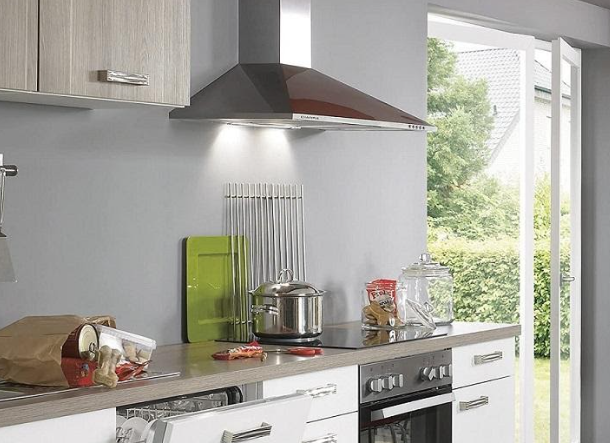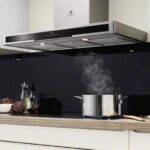In an era increasingly defined by environmental consciousness and the rising cost of utilities, the concept of efficiency has become a critical consideration for every household appliance. Within the heart of the home – the kitchen – the induction hob stands out as an undisputed leader in this regard. Far more than just a modern cooking surface, Induction Hob Efficiency is a fundamental characteristic that translates directly into tangible energy savings, faster cooking times, and a more comfortable kitchen environment. This article will delve into the core reasons behind the remarkable efficiency of induction hobs, dissecting their unique working principle, quantifying their superior performance, and highlighting the numerous benefits that make them the most efficient and economically sensible choice for modern kitchens in Lahore, Punjab, Pakistan, and across the globe.
The extraordinary efficiency of an induction hob is rooted in its innovative working principle: electromagnetic induction.1 Unlike traditional cooktops that rely on indirect heat transfer, an induction hob employs a highly direct and precise method.2 Beneath its sleek glass-ceramic surface, precisely engineered induction coils are located. When the hob is activated and a suitable piece of ferromagnetic cookware (a pot or pan with a magnetic base) is placed on a cooking zone, an alternating electric current flows through these coils.3 This current generates a rapidly fluctuating magnetic field.
The genius of induction’s efficiency lies in what happens next. This dynamic magnetic field doesn’t simply heat the hob’s surface or the surrounding air. Instead, it directly induces eddy currents within the metal of the cookware itself.4 These eddy currents are then almost instantaneously converted into thermal energy due to the pan’s electrical resistance.5 The result? Your food cooks, while the hob’s surface remains remarkably cool to the touch, only warming slightly from residual heat transferred back from the hot pan.6 This direct, targeted energy conversion is the cornerstone of Induction Hob Efficiency.
Quantifying Induction Hob Efficiency: The Numbers Speak for Themselves
The superior efficiency of induction hobs is not just a theoretical claim; it’s backed by demonstrable figures:
- Induction Hobs: Typically boast an energy efficiency rating of 85% to 90%. This means that almost 90 cents of every rupee spent on electricity for cooking goes directly into heating your food.
- Traditional Electric Hobs (Radiant/Coil): Generally operate at an efficiency of 60% to 70%.
- Gas Hobs: Are the least efficient, ranging from a mere 30% to 55% efficiency. A significant portion of the heat from a gas flame escapes into the surrounding air, warming your kitchen rather than your food.7
This substantial difference in efficiency translates directly into tangible energy savings on your utility bills.8 Over the lifespan of the appliance, these savings can significantly offset the initial purchase price of an induction hob, making it a smart long-term investment for any household.
The Multifaceted Benefits of Induction Hob Efficiency:
The high efficiency of induction hobs leads to a cascade of practical benefits for everyday cooking:
- Faster Cooking Times: Because almost no energy is wasted, pans heat up incredibly quickly, and water boils in a fraction of the time compared to other methods.9 This remarkable speed is a direct result of efficiency, allowing for quick meals and significantly reducing overall cooking duration.10
- Precise Heat Control: The direct and instantaneous energy transfer allows for unparalleled precision. When you adjust the power setting, the heat in the pan changes immediately. This fine-tuned control prevents overcooking, scorching, and ensures consistent results, all thanks to the efficient delivery of energy.11
- Enhanced Safety: A direct outcome of efficiency is improved safety. Since the hob’s surface itself doesn’t generate heat, it remains cool to the touch (only warming from residual heat from the hot pan).12 This drastically reduces the risk of accidental burns, especially in busy family cooking environments. Spills don’t bake on, making easy cleaning a breeze.13
- Cooler Kitchen Environment: Less wasted heat escaping into the air means your kitchen stays cooler and more comfortable while cooking.14 This is a considerable advantage, particularly in warm climates like Pakistan, reducing the need for additional cooling.
- Long-Term Cost Savings: While the initial cost of an induction hob might be higher, the continuous energy savings on electricity bills accumulate over time, proving to be a highly economical choice in the long run.
- Environmental Friendliness: Reduced energy consumption translates to a lower carbon footprint, making induction hobs a more environmentally sustainable option for conscious consumers.15
Maximizing Induction Hob Efficiency:
To fully capitalize on Induction Hob Efficiency, consider these tips:
- Use Induction-Compatible Cookware: Ensure your pots and pans have a flat, ferromagnetic base for optimal energy transfer.16
- Match Pan Size to Zone: Use a pan that closely matches the size of the cooking zone to maximize the interaction with the magnetic field and minimize wasted energy.17
- Utilize Power Boost: For rapid heating, use the Boost Function, which efficiently delivers a concentrated burst of power.18
- Keep it Clean: A clean glass-ceramic surface ensures optimal contact with cookware, further aiding in efficiency.
In conclusion, Induction Hob Efficiency is not just a technical specification; it’s a game-changer for the modern kitchen. Its superior working principle translates into tangible benefits like rapid cooking, precise heat control, enhanced safety, and significant energy savings.19 For homeowners looking for a smart, economical, and environmentally conscious cooking solution, embracing the unparalleled efficiency of an induction hob is a decision that pays dividends in every meal prepared, making it the quiet powerhouse that truly drives the future of cooking.


